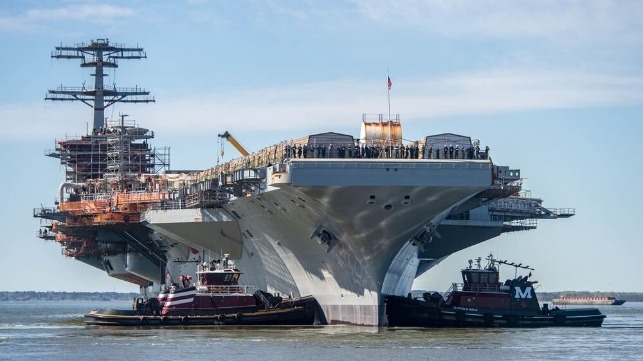Report: Turbine Generator Damage is Slowing Down U.S. Carrier Refits

Carriers are the U.S. Navy's most in-demand asset, and the Pentagon often has to make hard choices about whether to keep them deployed beyond their normal cycle in order to meet the needs of regional crises - like the Israeli operation in Gaza, or the Red Sea maritime security threat posed by Houthi rebels. Both of these ongoing situations forced military planners to extend a carrier deployment, months beyond the normal time limit for returning to base for maintenance and R&R. According to USNI, one of the reasons for limited availability of relief vessels for these missions is delays in repairs - driven in part by serious auxiliary powerplant problems.
There are many long-term factors behind the tension between carrier supply and demand, like the budget sequestration of years past, newbuild delays at Newport News, R&D problems in the Ford-class, COVID, supply chain issues and workforce challenges - but the cycle for major overhauls is one of the drivers for availability, and major maintenance periods have been taking years longer than normal. In two recent midlife refueling and overall programs, for USS George Washington and USS John C. Stennis, progress on return to the fleet was badly delayed because of "significant damage" to one turbine generator, Naval Sea Systems Command confirmed to USNI.
The Nimitz-class carriers have eight onboard steam turbine generators, each producing eight megawatts of power. This massive electrical plant has enough capacity and redundancy to ensure that the massive vessel's radars, comms systems, and crew support systems all keep running throughout a months-long mission overseas. (The carriers also have four diesel-powered generators for backup.) The turbines are intended to last the life of the carrier, and are not installed with easy replacement in mind, according to USNI - but in the most recent overhauls at Newport News, one turbine in each set was well out of specification.
"Inspections for both George Washington and John C. Stennis revealed one generator on each ship with significant damage that resulted in unplanned growth work, which contributed to schedule extensions on both ships," NAVSEA told USNI.
Carrier overhaul delays have been among the Navy's thorniest challenges. The USS George Washington's six-year sojourn in shipyard became notorious after a string of four onboard suicides, attributed in part to difficult conditions and in part to the two-year delay in completion. Many of the sailors assigned to George Washington began and ended a four-year stint in the Navy in shipyard, without going to sea. The ship became a case study for the quality of servicemembers' experience, and the Navy has taken steps to improve housing, transit, connectivity and career opportunities for sailors who get assigned to a carrier in shipyard.
USS George Washington has re-entered service at last and recently arrived in Japan, where she will serve as 7th Fleet's forward-deployed carrier. She replaces homeward-bound USS Ronald Reagan, which will soon enter a refit period at Puget Sound Naval Shipyard in Bremerton.
USS John C. Stennis left drydock in April, and is currently in the second phase of her refueling and complex overhaul alongside the pier. She will redeliver to the Navy in late 2026, five and a half years (10 percent of service life) after the midlife refit began at Newport News.
No comments:
Post a Comment